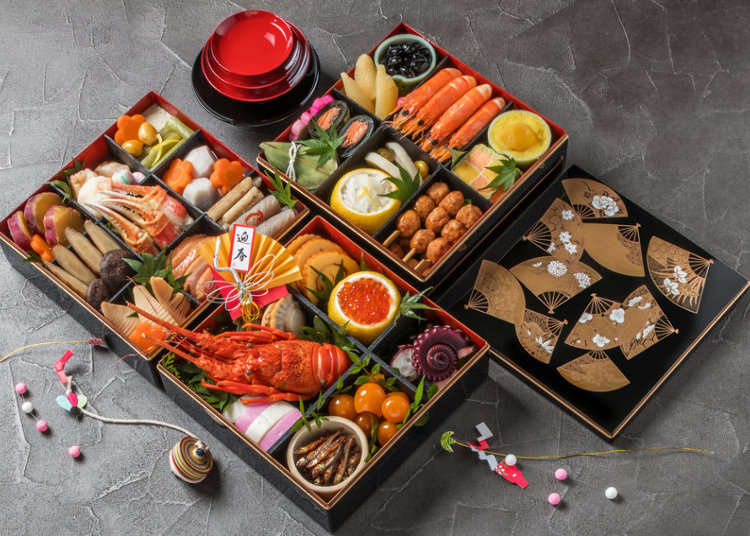
Osechi ryori, often shortened to simply “osechi,” is the name for the traditional New Year’s feast of an exquisitely prepared collection of foods that is shared among family members or friends who have gathered for Shogatsu. Osechi, whether homemade or purchased from a shop, are typically served in elegant stacked lacquer boxes called “jubako.”
As with many holidays throughout the world, the food eaten during Shogatsu (Japanese New Year’s) plays a significant role, inextricably linked to the culture from which it came. The food prepared isn’t just delicious, it’s auspicious, with each item holding special symbolic meaning.
The History of Osechi
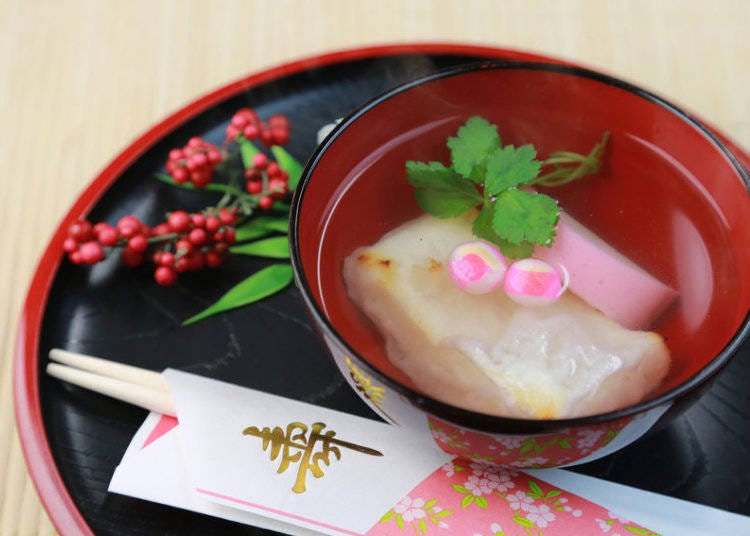
According to an acclaimed theory, the roots of Osechi reach back until Japan’s Yayoi period (300 BCE - 300 CE). Back then, it served as an offering to the deities, thanking them for a bountiful harvest. This harvest festival was called “sekku,” and the food that was prepared as part of the ritual was therefore referred to as sekku food. Over time, the original festival began to adapt more and more customs and events from China, and the harvest festival food that was enjoyed by the court also got a new name: osechiku. The modern name of osechi derives from this term. In the Edo period, people started to incorporate these kind of court-exclusive events and habits into their own daily lives and osechi suddenly was no longer exclusive at all but a delicious custom enjoyed by everybody. The term of “osechi cuisine” is also said to have been coined during that time, referring to the dishes eaten during the most important event on the Japanese calendar: New Year’s.
Osechi in a Box: How to Eat Osechi
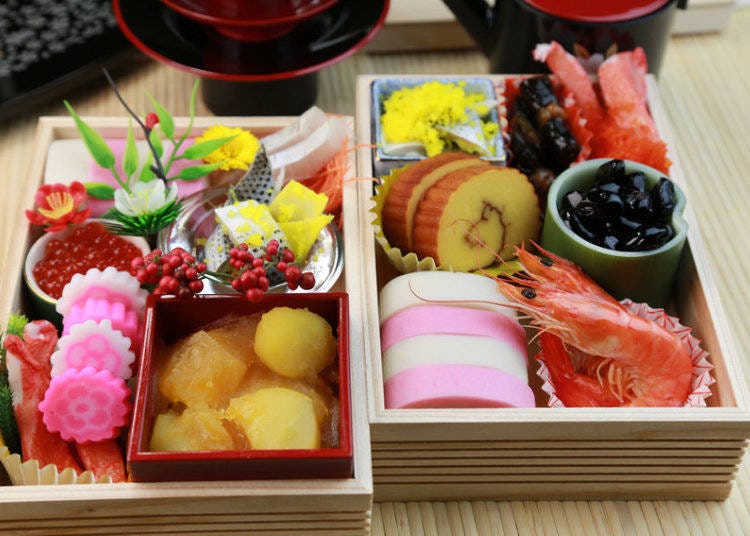
Osechi carries both the meaning of an offering to the deities of New Year’s, as well as a dish eaten to wish for a family’s prosperity. There is yet another meaning hidden in osechi, though: “piling up luck and happiness,” which is precisely why it is served in stackable boxes. Formally, osechi should be served in five boxes, stacked upon each other, filling the top four boxes with food. The box at the bottom, however, stays empty. This is because it is used to receive the blessings of the deities – they’re symbolically put into the empty box. In recent years, three-layer boxes have become the standard, however.
Apart from the box and its layers, there is also a proper way to fill them. Furthermore, it is said that filling the boxes with five, seven, and nine kinds of different dishes will bestow particular fortune upon oneself, as they are considered lucky numbers.
What’s Inside?
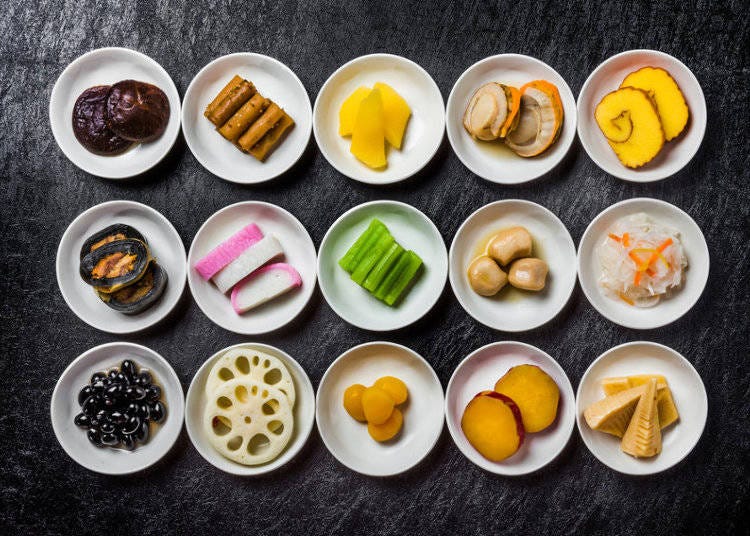
The practice of eating osechi began at a time before refrigeration existed, and as such, traditional osechi items consisted of items that could be preserved, eaten at room temperature, and kept for several days. The staples of osechi include “nimono,” vegetables simmered in sugar, soy sauce, and mirin (a time of rice wine used for cooking), as well as foods cured in salt or vinegar.
The foods included in osechi also hold auspicious meanings. The following are some common osechi foods and their symbolic meanings:
The Top Tier
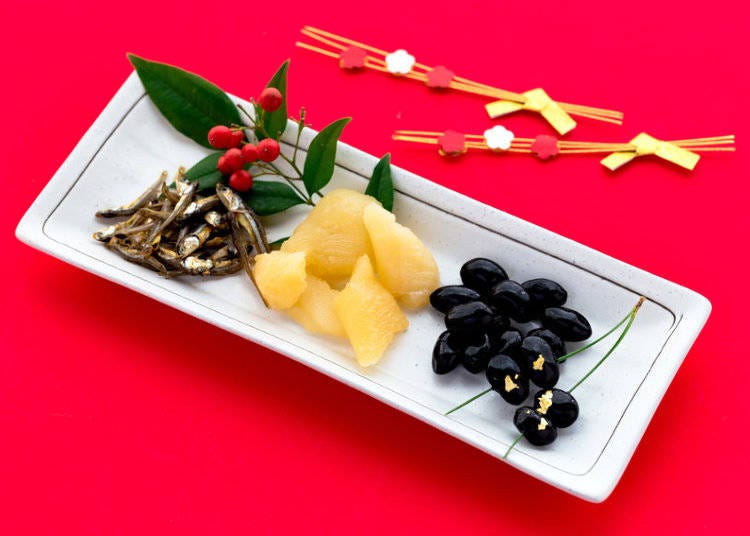
・Kazunoko – Pickled herring roe. The many roe represent abundant offspring.
・Kuromame – Sweet simmered black beans. As “mame” can also mean vigor in Japanese, kuromame are eaten for productivity in the coming year. In addition, it’s black color wards off evil spirits.
・Tazukuri – Candied dried sardines. Used as rice paddy fertilizer in the past, Japanese anchovies symbolize prayers for a fruitful catch and harvest.
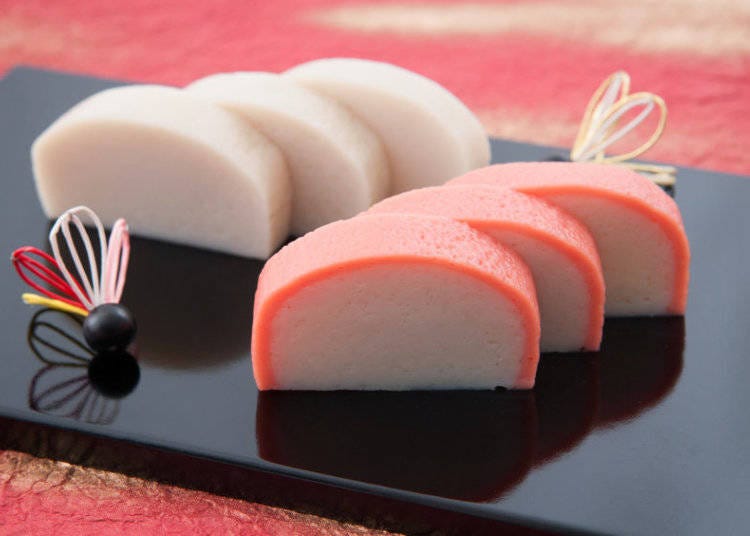
・Kohaku Kamaboko – Fish paste cake. Red represents an amulet, while white expresses purity, sacredness. The combination of both colors brings good luck and happiness. The dome shape also represents the rising sun.
・Datemaki – Sweet, rolled omelet with fish paste. Datemaki resembles a scroll, and thus symbolizes cultural development and scholastic achievement.
・Kuri Kinton – Candied chestnuts mixed in sieved sweet potato, which are boiled in hot water and then macerated in syrup. This dish represents wealth and prosperity due to its golden color.
The Middle Tier
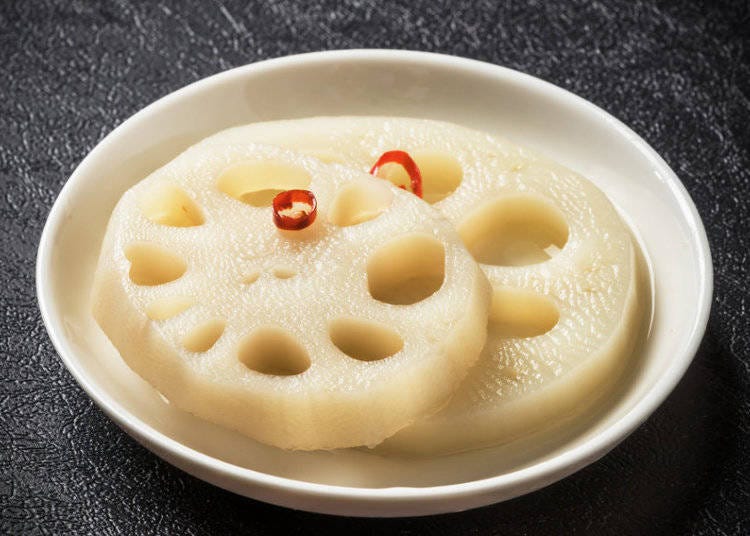
・Ebi – Prawns. The long “beard” and bent “waist” of this seafood illustrates old age and a long life.
・Renkon – Lotus root. The many holes in this vegetable symbolize seeing future hope.
The Bottom Tier
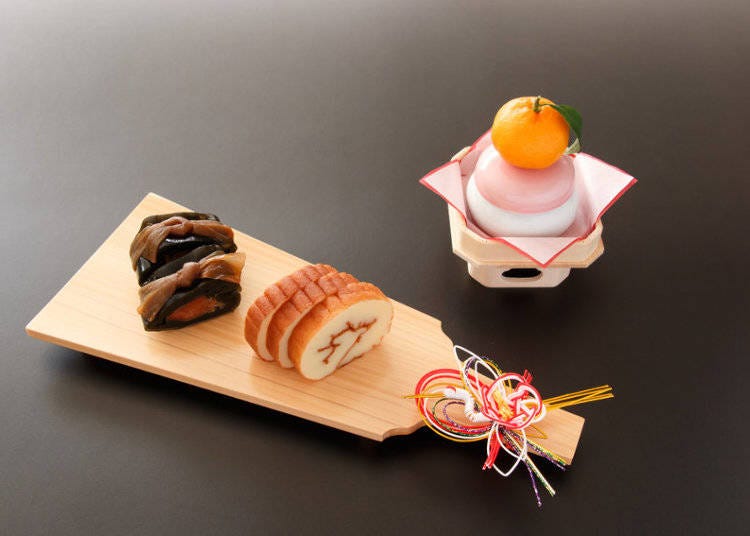
・Shiitake – The shape of the shiitake mushroom cap is reminiscent of the caps worn by Japanese soldiers in battle long ago. They are included as a wish for health and well-being.
・Nejiri Konnyaku – Konjac. Because of this food’s resemblance to a rope, it is symbolic of the tightened roped used by samurai when preparing for battle. It signifies the symbolical tightening of reins, and as such, the cultivation of the mind.
・Kobumaki – Kelp roll with herring. Its name also is a play on words with the Japanese verb “yorokobu,” meaning “to rejoice,” and hence a lucky charm.
A Family Tradition

Oesechi ryori is more than just a meal, it’s an integral part of the Japanese New Year traditions. The act of sharing these celebratory dishes is also a way of ringing in the New Year by sharing intentions of health, prosperity, and happiness with family. If you are in Japan during Shogatsu, why not try osechi ryori for yourself?
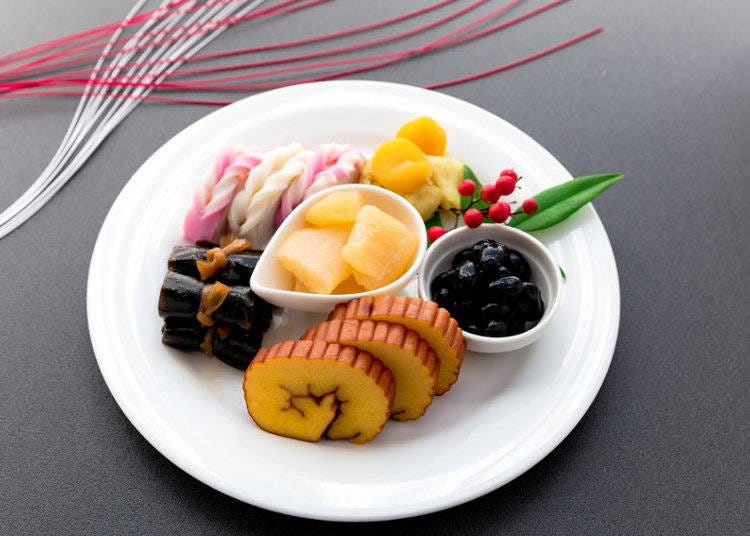
- Area
- Category
*Prices and options mentioned are subject to change.
*Unless stated otherwise, all prices include tax.
Popular Tours & Activitiess
-

New in Ginza! Air BicCamera Ginza Opens with a Faster, More Convenient Shopping Experience
by: Guest Contributor
-

Jujutsu Kaisen Takes Over JR East With a Wrapped Shinkansen This Winter
by: Guest Contributor
-
Ad

(Opening in Jan 2026) 'THE SUMO LIVE RESTAURANT HIRAKUZA GINZA TOKYO!' 5 Exciting Ways to Experience the World of Sumo!
-

Japan’s Shinkansen Is About to Change Travel in an Unexpected Way
by: Guest Contributor
-
Ad

Complete Guide to Ueno's National Museum of Nature and Science, the Perfect Place to Visit on Rainy Days or With Children
-

First Japan Cherry Blossom 2026 Forecast Announced! Here's When & Where to See Sakura in Japan
Inspiration for Accommodations
-

Enjoy Mt. Fuji from the Comfort of Your Room! Recommended Ryokan with Mt. Fuji View
-

Stay Near the Cherry Blossoms! Hotels for Cherry Blossom Viewing in Tokyo
-

Family-Friendly Hotels with Free Shuttle to Disneyland: Convenient Access for a Magical Stay
-

Top Ranked Hakone Hotels with Mt. Fuji View: Enjoy Stunning Scenery from Your Private Space
-

Convenient Tokyo Hotels with Airport Shuttle: Ideal for Families and Heavy Luggage
-

Stunning Tokyo Tower View Hotels: Enjoy Spectacular Scenery from Your Private Space
-

Convenient Asakusa Hotels with Kitchens: Ideal for Extended Family Visits
-

Experience Luxury: Hakone's 10 Best Five-Star Accommodations
-

Enjoy Mt. Fuji Autumn Leaves! Top Hotels Near the Popular Autumn Leaves Corridor
-

Experience Hakone Fall Foliage from Your Room with Stunning Views
-

Does It Snow in Tokyo? Tokyo Snowfall Probability Based on Amount and Number of Snow Days
-

What to Pack for Japan: 8 Essential Things for a Hassle-Free Trip
-

Tokyo Station Top 10 Sweets Ranking!
-

December Events in Tokyo: Fun Festivals, Food, and Things to Do
-

Japan Braces for Snowstorm Shock Thru January 10—Here's How to Travel Safely
-

Exploring Tokyo: 4 Must-Visit Spots around Tokyo Station
- #best ramen tokyo
- #what to buy in ameyoko
- #what to bring to japan
- #new years in tokyo
- #best izakaya shinjuku
- #things to do tokyo
- #japanese nail trends
- #what to do in odaiba
- #onsen tattoo friendly tokyo
- #daiso
- #best sushi ginza
- #japanese convenience store snacks
- #best yakiniku shibuya
- #japanese fashion culture
- #best japanese soft drinks


















